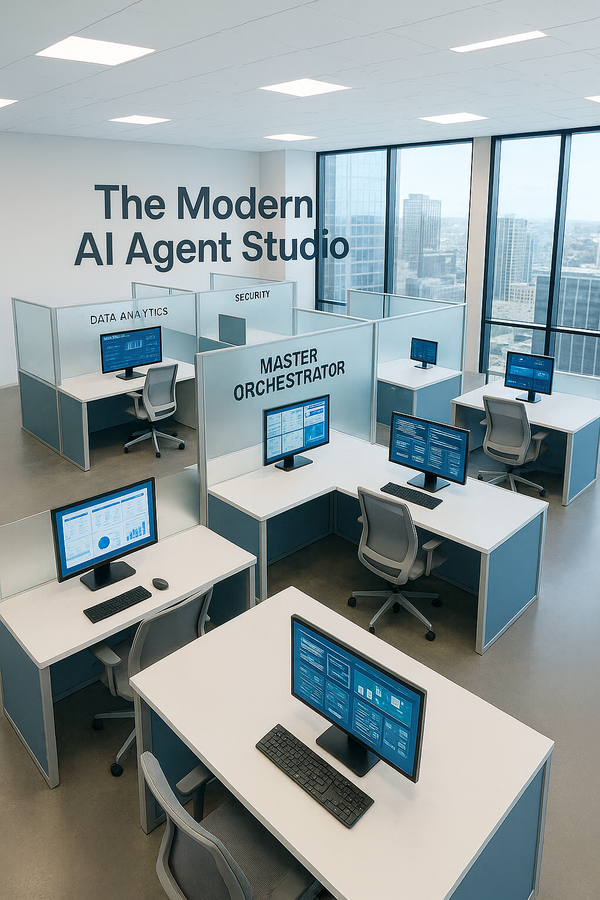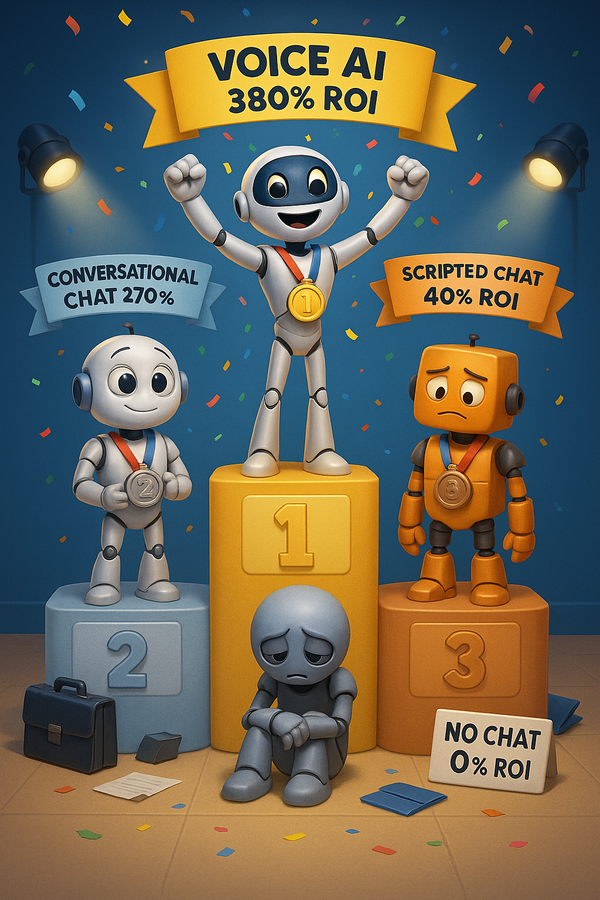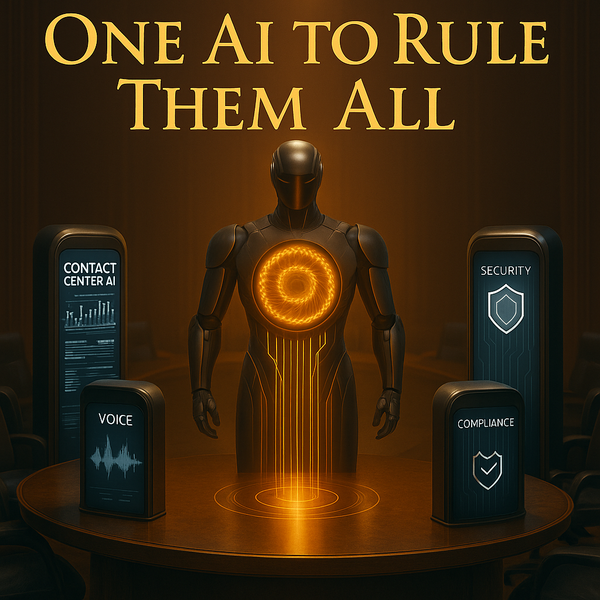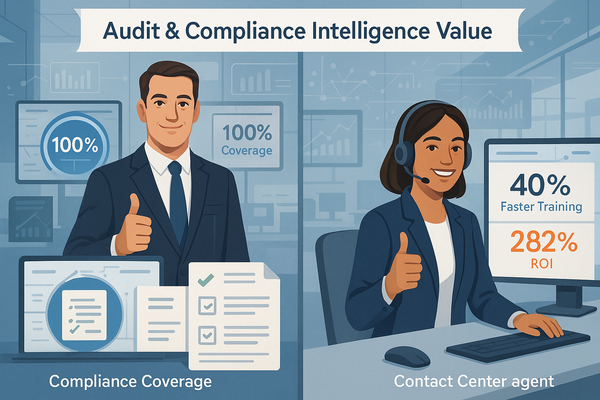Enterprise AI Intelligence Weekly: Microsoft's $300B Independence Play - Building Their Own AI While Leaving OpenAI Behind
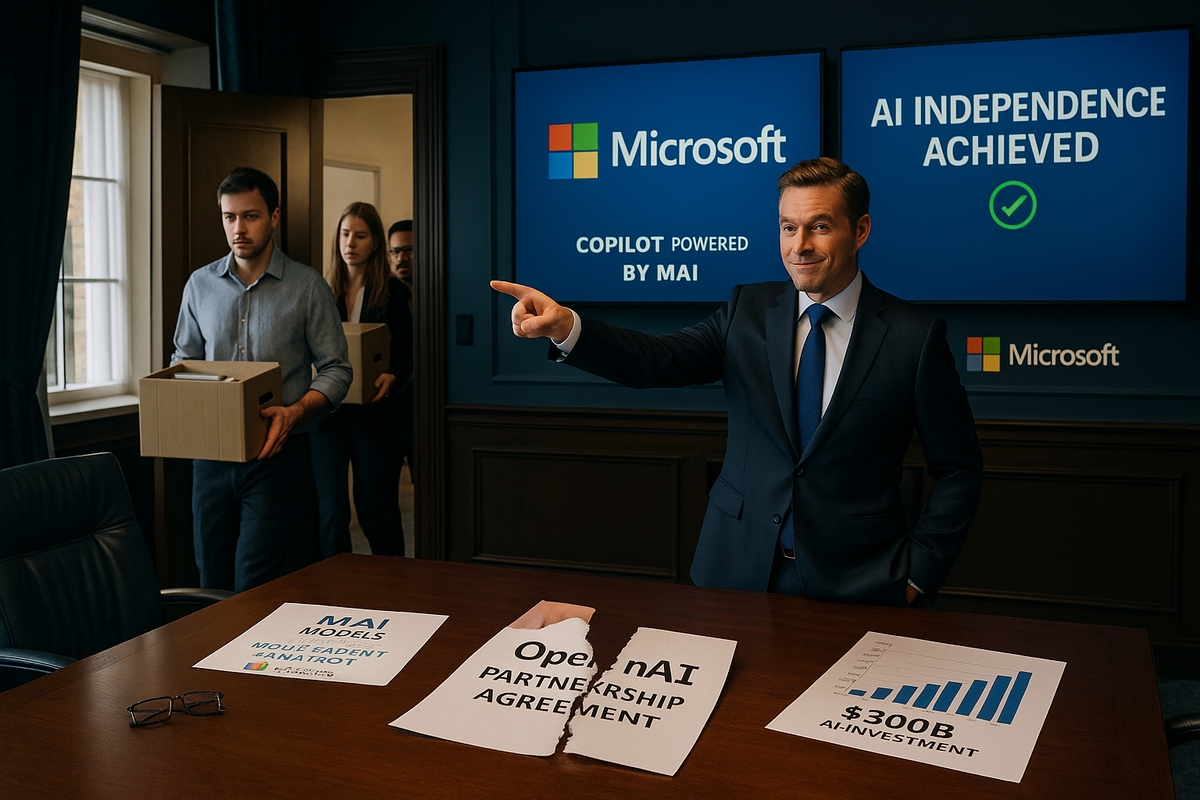
OpenAI Behind
🎯 Big Picture Enterprise Summary: Microsoft is making the biggest strategic pivot in enterprise AI since ChatGPT launched. While spending $300 billion on AI infrastructure, they're secretly building their own AI models (called "MAI") to replace OpenAI and launching multi-agent systems that let AI assistants work together like human teams. This isn't just a technology upgrade - it's Microsoft positioning to control the entire enterprise AI stack without depending on external partners.
🏢 Microsoft's AI Independence Strategy
The OpenAI Breakup Nobody Saw Coming
Despite investing $13 billion in OpenAI, Microsoft is quietly building their own AI models called "MAI" (Microsoft Artificial Intelligence). Sources report that MAI models are competitive with OpenAI and Anthropic models, and Microsoft is already testing whether MAI could power Copilot instead of OpenAI's technology.
Why This Matters for Enterprises:
- Cost Control: Microsoft eliminates licensing fees by using their own AI
- Feature Independence: No more waiting for OpenAI to add enterprise features
- Data Security: Complete control over how enterprise data flows through AI systems
- Competitive Advantage: Microsoft can optimize AI specifically for business applications
The Numbers Behind the Strategy:
- MAI models reportedly have 500 billion parameters - positioned between GPT-3 and GPT-4 in power
- Microsoft plans to spend $100 billion just this year on AI infrastructure
- Led by Mustafa Suleyman, former founder of DeepMind and Inflection AI
🤖 Multi-Agent Revolution Goes Mainstream
What Multi-Agent Systems Actually Mean
Think of it like this: Instead of one super-smart AI trying to handle everything, you have a team of specialized AI assistants working together.
Single AI Example: Customer calls about a billing dispute
- One AI tries to handle billing, account management, and customer service
- Often gets confused switching between different types of tasks
Multi-Agent Team: Same customer call triggers
- Billing AI: Handles the dispute and processes refunds
- Account AI: Updates customer information and checks history
- Customer Service AI: Coordinates the response and follows up
- Result: Each AI does what it's best at, like a human team
Microsoft's Multi-Agent Advantage: Microsoft Copilot Studio now supports multi-agent orchestration, allowing agents to combine skills and tackle broader, more complex tasks
Ray Smith, VP of AI Agents at Microsoft, explains: "It's very hard to create a reliable process that you squeeze into one agent. Breaking it up into parts improves maintainability and makes building solutions easier, but it also significantly enhances reliability as well"
💡 Key Enterprise Term: Agent2Agent (A2A) Protocol
What It Is: A new standard that lets AI agents from different companies work together securely
Why It Matters:
- Vendor Independence: Your Microsoft AI can work with Google AI or Salesforce AI
- No Lock-In: You're not trapped with one vendor's ecosystem
- Better Results: Best-of-breed AI specialists can collaborate on complex tasks
Real-World Example: A customer dispute starts in Gmail, triggers Microsoft's Joule agent, which then collaborates with a Google agent accessing BigQuery data - all working together to resolve the issue without manual switching between systems
📈 Week's Key Enterprise Insight: The $300B Infrastructure War
Microsoft's Massive Bet:
- $100 billion in AI infrastructure spending this year alone
- Enterprise AI spending doubled from $3.5B to $8.4B in just 6 months
- Innovation budgets dropped from 25% to 7% as AI moves from experimental to essential
What This Means: AI is no longer a "nice to have" technology. It's becoming as essential as email or databases. Microsoft is betting that controlling the entire AI stack - from infrastructure to models to applications - will dominate the next decade of enterprise computing.
The Strategic Reality: Microsoft announced over 50 AI tools at Build 2025, positioning itself as the central player in the emerging "agentic ecosystem"
👀 What Enterprises Should Watch This Week
Multi-Agent Production Deployments Monitor how enterprises move beyond single AI assistants to teams of specialized agents. Early adopters are seeing dramatic improvements in complex workflow automation.
The OpenAI Relationship Evolution Watch for Microsoft gradually reducing dependence on OpenAI while maintaining their partnership. This could signal pricing and feature changes for enterprises using both platforms.
Infrastructure Cost Optimization Dell reports their AI Factory approach can be up to 62% more cost-effective than public cloud for on-premises AI workloads. Microsoft's infrastructure investments may drive similar enterprise cost advantages.
Agent Security and Governance Microsoft announced 6 new Security Copilot agents to handle autonomous security tasks, highlighting that AI security is becoming as important as the AI capabilities themselves.
Critical Success Factors to Monitor:
- Multi-agent reliability in production enterprise environments
- Vendor independence through open standards like A2A protocol
- Cost optimization as AI scales from experimental to operational budgets
- Security governance for autonomous AI agents handling business-critical tasks
The Bottom Line: Microsoft isn't just building better AI - they're building a completely independent AI ecosystem that doesn't need OpenAI, Google, or anyone else. For enterprises, this means more choice, better integration, and potentially lower costs, but also the need to plan for a multi-vendor AI future where your agents need to work together across different platforms.
The enterprise AI landscape is shifting from "which AI should we use?" to "how do we orchestrate multiple AI agents to work as a team?" Microsoft's $300 billion bet suggests they believe whoever controls the orchestration layer controls the future of enterprise AI.
Sources and References:
[1] Microsoft reportedly develops LLM series that can rival OpenAI, Anthropic models, SiliconANGLE, March 8, 2025
[2] Multi-agent orchestration and more: Copilot Studio announcements, Microsoft Copilot Blog, May 19, 2025
[3] Microsoft announces over 50 AI tools to build the 'agentic web' at Build 2025, VentureBeat, May 19, 2025
[4] SAP and Google Cloud Are Advancing Enterprise AI, SAP News Center, April 9, 2025
[5] How 100 Enterprise CIOs Are Building and Buying Gen AI in 2025, Andreessen Horowitz, June 19, 2025
[6] Dell Technologies Fuels Enterprise AI Innovation with Infrastructure, Solutions and Services, Dell, May 19, 2025
[7] Microsoft unveils Microsoft Security Copilot agents and new protections for AI, Microsoft Security Blog, March 24, 2025
